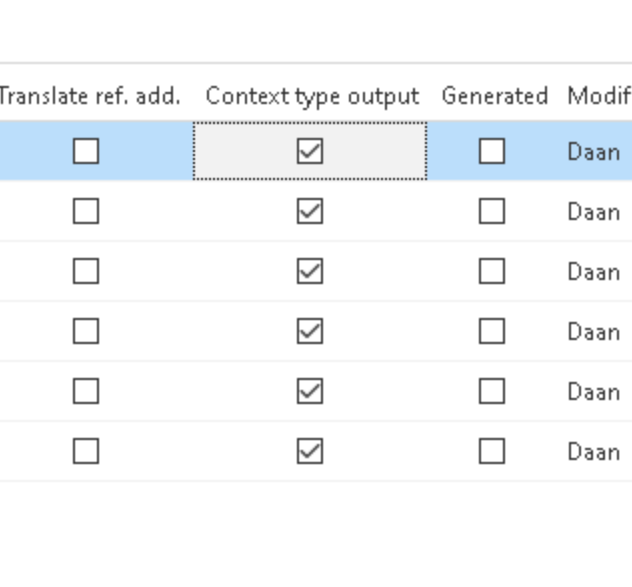At this moment, if I state in the SF that a detail is not visible, the parameter to make it visible is not offered to the context procedure, and the settings in the SF database always win.
This has 2 disadvantages;
1) If we change the visibility in the SF and forget to recompile the context procedure, we get an error.
2) If the internet is slow, or something goes wrong the user can see tabs, the user should not see. ( We have one place where we switch between 10 tabs … ).
It would be nice to have 3 or 4 states; show, don’t show, or only show when the context stored procedure wants it, with “this” as default ... 4 states would be possible with one additional checkbox.
This is kind of related to my previous idea, but technically requires more. User preferences can differ, and I like to build by enabling things, instead of disabling things. ( We have a row based security on top of the Thinkwise security… that is an important reason why I would like to have the possibility to only show things when the stored procedure allows it ).
Open
Ability to pre-set the default ‘_type’ state of objects for Context and Layout procedures
Reply
Enter your E-mail address. We'll send you an e-mail with instructions to reset your password.








